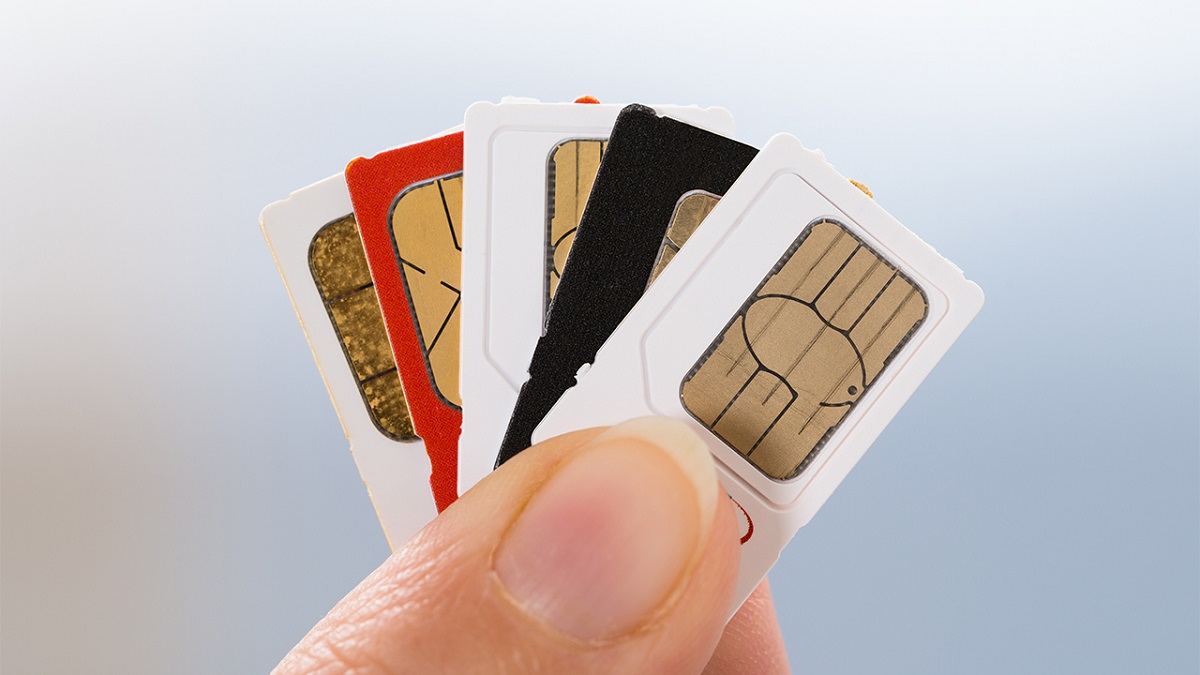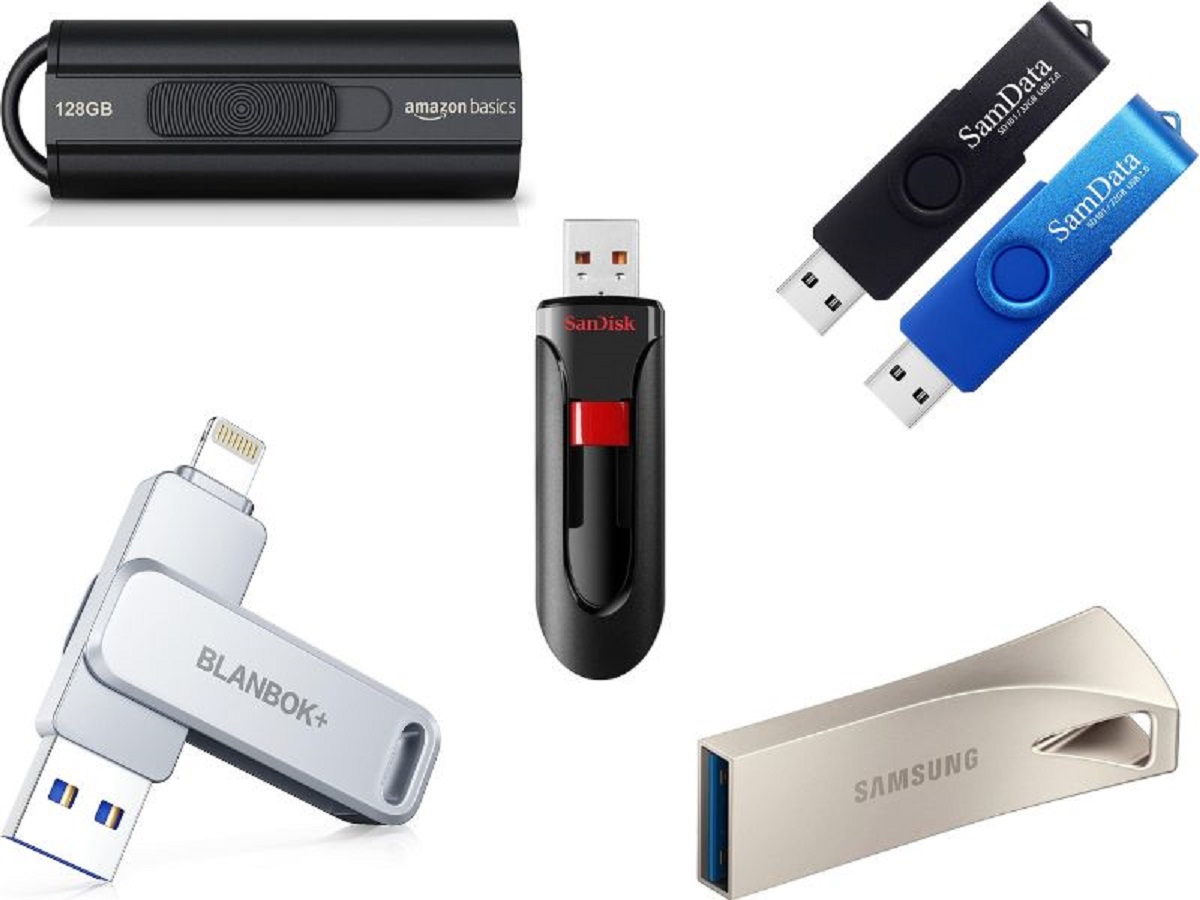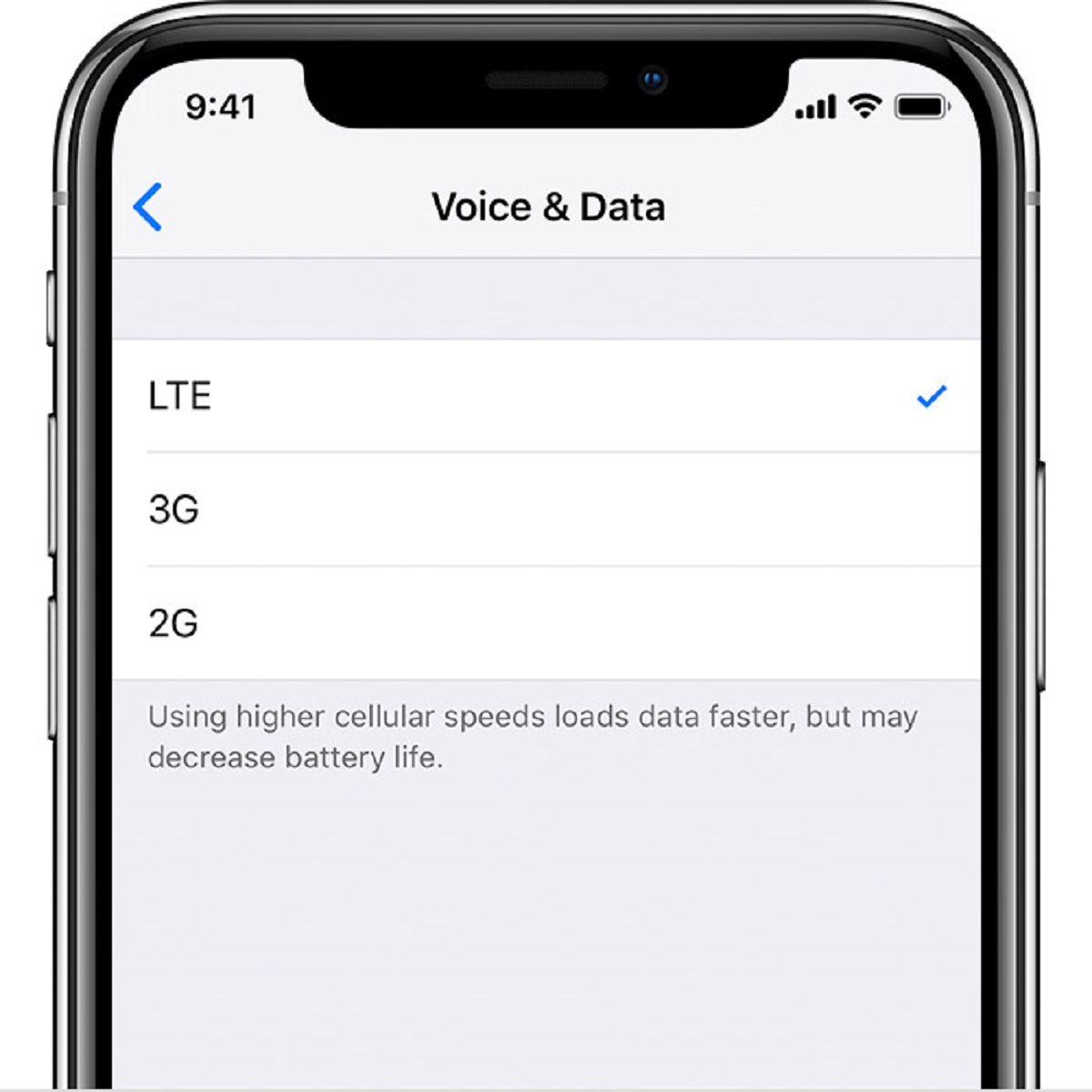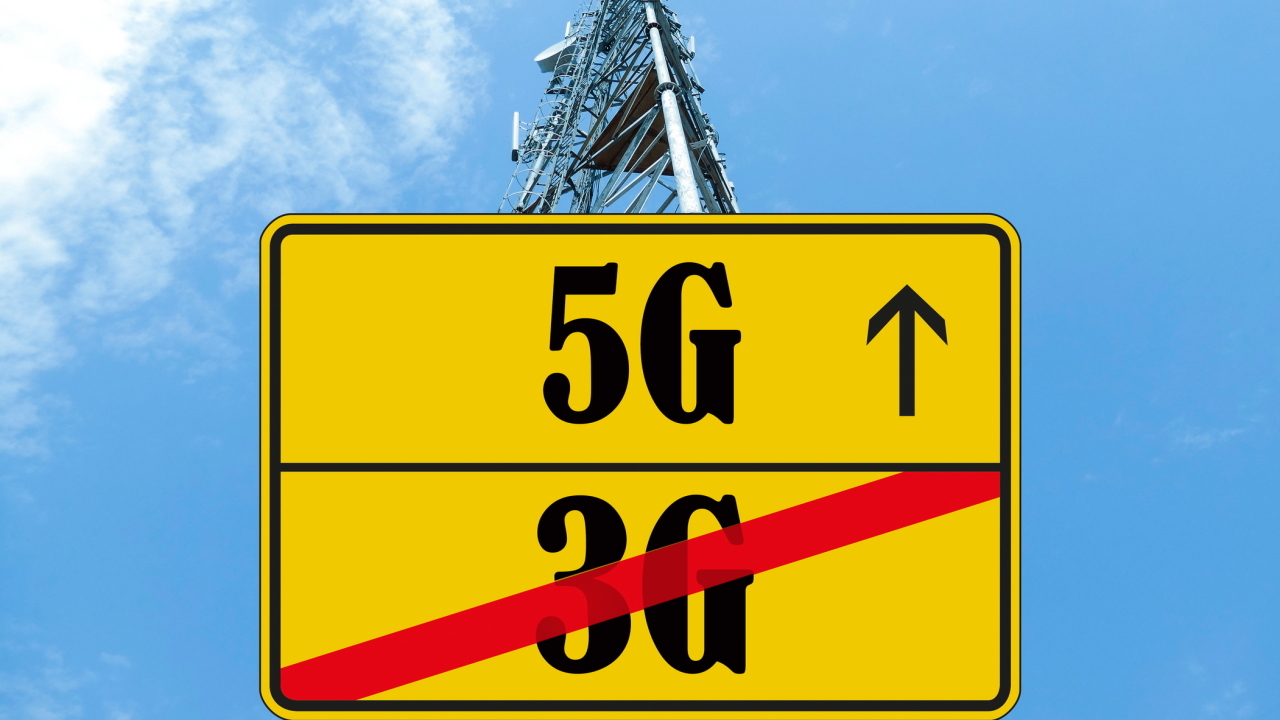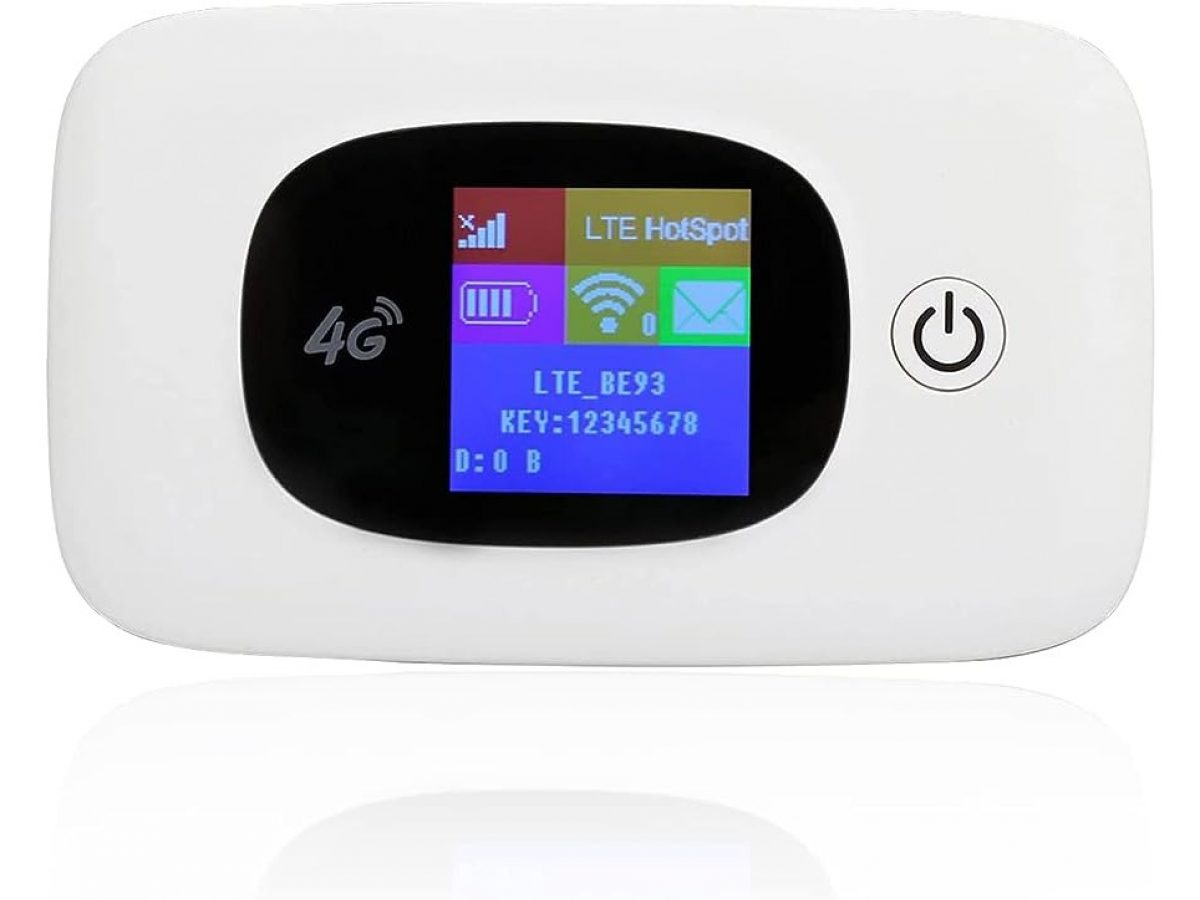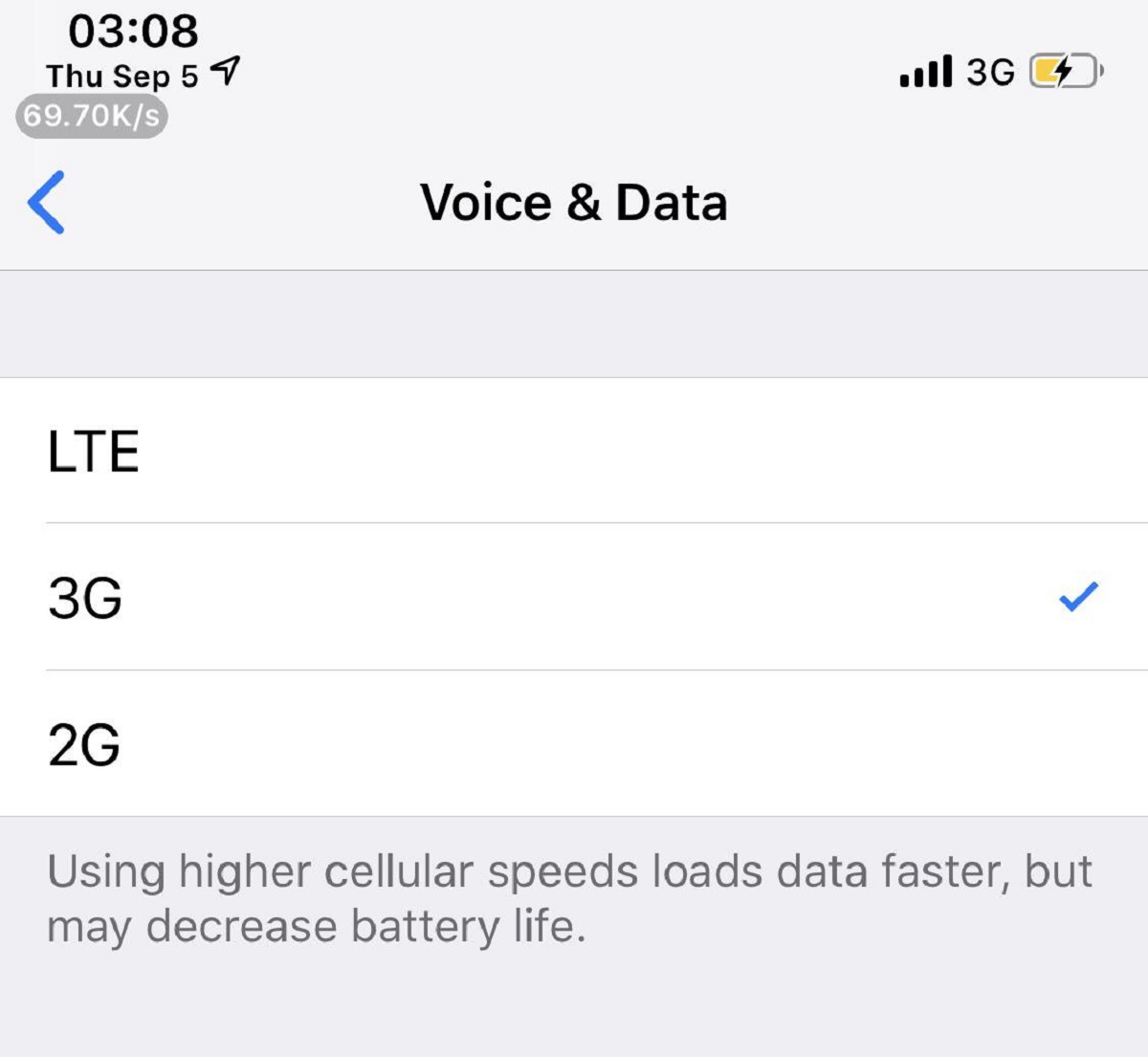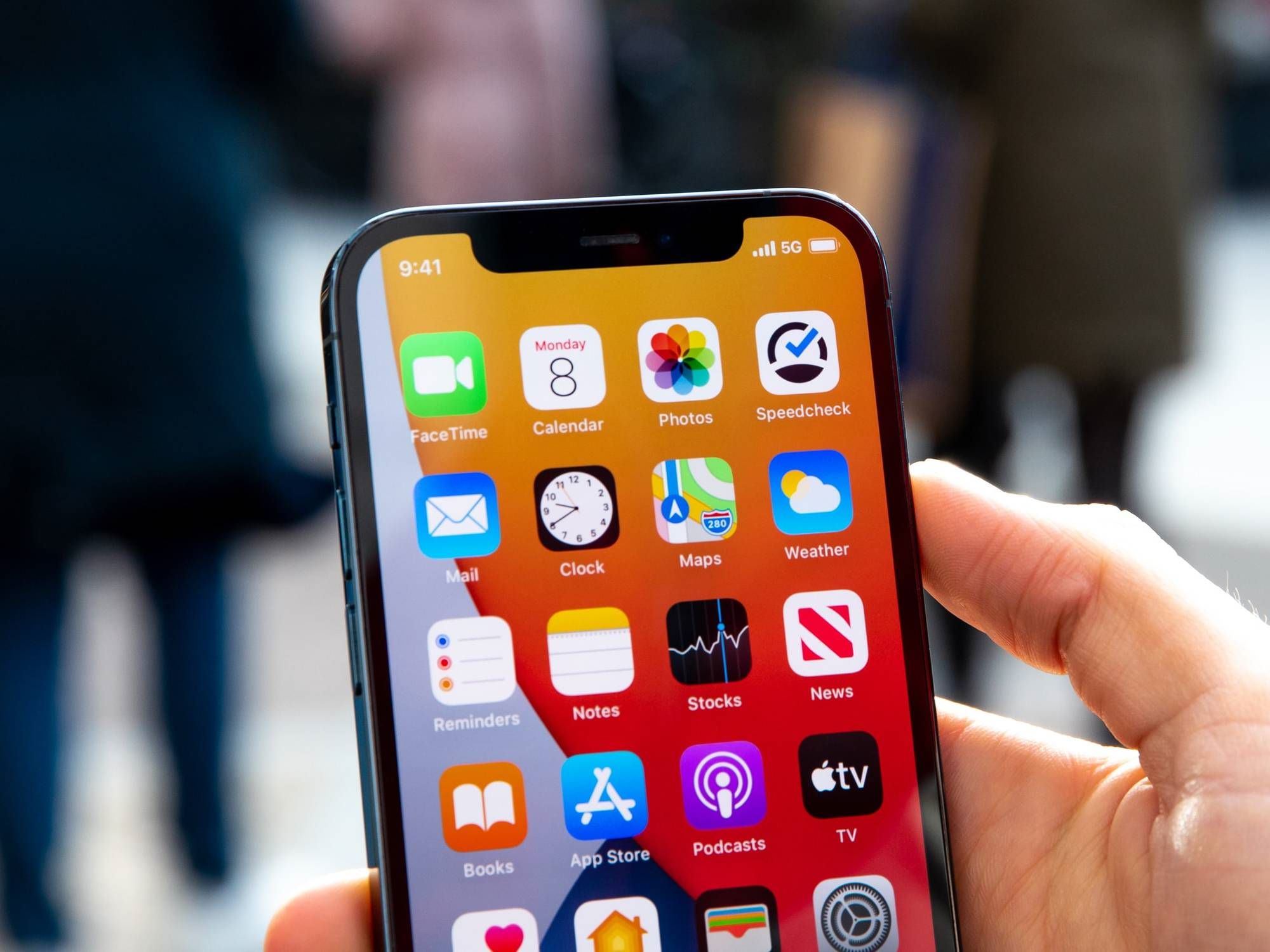Introduction
Welcome to the world of mobile communication! In today’s fast-paced digital era, staying connected is more important than ever. With the ever-growing demand for faster internet speeds, advanced technologies like LTE (Long-Term Evolution) and 3G (Third Generation) have emerged to meet the needs of mobile users. But what exactly is the difference between LTE and 3G? In this article, we’ll delve into the details to help you understand the distinctions and advantages of these two mobile network technologies.
Before we dive into the specifics, let’s start with a brief overview of LTE and 3G. LTE, also known as 4G LTE, is the latest evolution in mobile network technology. It offers significantly faster speeds and improved bandwidth compared to its predecessor, 3G. 3G, on the other hand, was a significant leap forward from 2G (Second Generation) technology, providing higher data transmission rates and enabling the use of smartphones and mobile internet services.
Now that we have a general understanding, let’s take a closer look at the key differences between LTE and 3G. By exploring various aspects such as speed, network architecture, spectral efficiency, latency, coverage, device compatibility, and cost, we can gain a comprehensive understanding of how these technologies compare and which one may be best suited for your needs.
Overview of LTE and 3G
Before we delve into the technical aspects, let’s start with a broad overview of LTE and 3G.
LTE, or Long-Term Evolution, is a modern wireless communication standard that brought a significant upgrade to mobile networks. It is often referred to as 4G LTE because of its fourth-generation status. LTE offers faster and more efficient data transfer rates compared to its predecessor, 3G.
3G, or Third Generation, marked a major milestone in mobile communication when it was introduced. It provided faster data transmission compared to 2G and enabled the widespread adoption of smartphones and mobile internet services.
Both LTE and 3G are designed to provide high-speed internet access on mobile devices. However, LTE takes it a step further by offering enhanced performance and improved latency for a seamless browsing and streaming experience.
One of the key differences between LTE and 3G is their network architecture. LTE operates on an entirely packet-switched network, whereas 3G utilizes a combination of circuit-switched and packet-switched networks. This fundamental difference results in better efficiency and faster data transfers for LTE.
Another notable difference lies in their spectral efficiency. LTE utilizes advanced techniques such as Orthogonal Frequency Division Multiplexing (OFDM) and Multiple Input Multiple Output (MIMO) technology to maximize spectral efficiency and increase data capacity. This allows for a higher number of user connections and improved overall network performance.
While 3G networks provide reliable coverage in urban areas, LTE networks have significantly broader coverage, especially in rural and remote locations. This makes LTE a more appealing choice for users who require seamless connectivity no matter where they are.
When it comes to device compatibility, most modern smartphones and tablets are LTE-enabled. However, older devices that are only 3G-compatible may experience slower internet speeds when connected to an LTE network.
In terms of cost, LTE technology often comes with a higher price tag due to its advanced features and superior performance. However, as LTE becomes more widespread and its adoption increases, the cost difference between LTE and 3G devices and plans is gradually decreasing.
Overall, LTE and 3G are significant advancements in the field of mobile communication. LTE offers faster speeds, improved network architecture, greater spectral efficiency, broader coverage, and device compatibility. However, 3G networks still provide reliable internet access and can be a suitable choice for users who do not require the highest speeds or cutting-edge features.
Speed and Bandwidth
One of the most notable differences between LTE and 3G lies in their speed and bandwidth capabilities.
LTE networks offer significantly faster download and upload speeds compared to 3G. With LTE, users can experience speeds of up to 100 megabits per second (Mbps) for downloads and up to 50 Mbps for uploads, depending on network conditions. This enhanced speed ensures quicker downloads, smoother video streaming, and faster web browsing.
On the other hand, 3G networks provide lower speeds, typically ranging from 1 to 10 Mbps for downloads and 0.5 to 5 Mbps for uploads. While these speeds are sufficient for many everyday tasks, they may not be ideal for bandwidth-intensive activities such as high-definition video streaming or large file downloads.
The increased speed of LTE is mainly due to the use of advanced technologies such as OFDM and MIMO, which maximize data transfer rates and overall network efficiency. These technologies allow LTE networks to support more simultaneous users without sacrificing performance.
In terms of bandwidth, LTE networks offer wider bandwidth compared to 3G. This means that more data can be transmitted simultaneously, resulting in reduced network congestion and improved overall user experience.
The availability of wider bandwidth in LTE networks also enables the provision of higher-quality services, such as high-definition video calling and video conferencing, without lag or buffering issues that may be encountered in 3G networks.
It’s important to note that the actual speeds experienced by users may vary depending on factors such as network congestion, signal strength, and the capabilities of the user’s device.
Overall, LTE networks provide significantly faster speeds and wider bandwidth compared to 3G networks. This makes LTE the preferred choice for users who require high-speed internet access for tasks such as streaming multimedia content, online gaming, or large file transfers. However, it’s worth considering the coverage and availability of LTE in your area, as it may not be as widespread as 3G in some regions.
Network Architecture
The network architecture of LTE and 3G is another significant factor that sets them apart.
LTE operates on an all-IP (Internet Protocol) packet-switched network, which means that all voice and data traffic is transmitted as packets over the internet. This modern architecture offers several advantages, including more efficient data transmission, faster connection establishment, and better network scalability.
On the other hand, 3G networks utilize a combination of circuit-switched and packet-switched networks. Circuit-switched networks are typically used for voice calls, while packet-switched networks handle data traffic. This hybrid architecture can result in slightly longer call setup times and inferior data transmission efficiency compared to LTE.
The all-IP architecture of LTE allows for seamless integration of voice and data services over the network. This is achieved through a technology called Voice over LTE (VoLTE), which enables high-quality voice calls over the LTE network. With VoLTE, users can experience faster call setup times, superior call quality, and the ability to simultaneously use voice and data services.
In addition to VoLTE, LTE networks also support Voice over Wi-Fi (VoWi-Fi) and Voice over Internet Protocol (VoIP) services, further enhancing the flexibility and convenience of communication options for users.
Moreover, the all-IP architecture of LTE is designed to be more scalable, allowing for the seamless integration of newer technologies and services as they become available. This means that LTE networks have the potential for future expansion and improvement without requiring significant modifications to the underlying network infrastructure.
3G networks, with their reliance on circuit-switched technology for voice calls, have limitations in terms of scalability and compatibility with emerging technologies. As a result, the implementation of new services and features on 3G networks may be more challenging and may require more substantial infrastructure upgrades.
In summary, the network architecture of LTE, with its all-IP packet-switched approach, offers greater efficiency, faster call setup times, better scalability, and seamless integration of voice and data services. This makes LTE a more advanced and future-proof choice compared to the hybrid architecture of 3G networks.
Spectral Efficiency
Spectral efficiency is a crucial aspect when comparing LTE and 3G networks. It refers to how efficiently the available frequency spectrum is utilized to transmit data.
LTE networks employ advanced technologies such as Orthogonal Frequency Division Multiplexing (OFDM) and Multiple Input Multiple Output (MIMO) to achieve high spectral efficiency. OFDM divides the available frequency spectrum into multiple smaller subcarriers, allowing for more efficient utilization of the spectrum. MIMO technology, on the other hand, utilizes multiple antennas at both the transmitter and receiver to transmit and receive data simultaneously, further improving spectral efficiency.
The combination of OFDM and MIMO in LTE networks allows for higher data rates, increased network capacity, and improved resilience against signal interference. This means that LTE networks can handle a larger number of user connections and provide higher-quality services compared to 3G.
3G networks, while still offering reasonable spectral efficiency, do not employ the same advanced techniques as LTE. This limits their overall data transmission capacity and their ability to support a large number of simultaneous users. As a result, 3G networks may experience congestion and reduced speeds, particularly in densely populated areas.
The spectral efficiency of LTE is also beneficial in terms of utilizing the available frequency spectrum more effectively. This allows for better optimization of network resources, resulting in improved overall network performance and a more seamless user experience.
An important consideration regarding spectral efficiency is that LTE networks operate in different frequency bands compared to 3G. LTE networks have been deployed in both lower and higher frequency bands, with each band offering certain advantages in terms of coverage and capacity. By utilizing multiple frequency bands, LTE networks can provide a balanced approach to achieve optimal spectral efficiency across various deployment scenarios.
In summary, LTE networks, with their advanced techniques such as OFDM and MIMO, offer higher spectral efficiency compared to 3G networks. This leads to improved data rates, increased network capacity, and the ability to support a larger number of simultaneous users. The higher spectral efficiency of LTE networks translates into a better user experience, particularly in areas with high data traffic and network congestion.
Latency
When it comes to mobile communication, latency refers to the time it takes for data to travel from the source (such as a server) to the destination (such as a user’s device) and back again. Latency is important for real-time applications, such as online gaming, video calls, and voice communications, as it directly affects the responsiveness and overall user experience.
LTE networks offer significantly lower latency compared to 3G networks. The improved latency in LTE is a result of various factors, including the advanced network architecture and the use of packet-switched technology. With LTE, users generally experience latency in the range of 10-30 milliseconds (ms), whereas 3G networks have latency ranging from 100-300 ms.
The lower latency in LTE networks enables faster response times for interactive applications, resulting in a smoother and more immersive user experience. Whether it’s making real-time video calls, engaging in multiplayer online gaming, or using voice-controlled applications, the reduced latency of LTE networks ensures minimal delay and a more seamless interaction.
Furthermore, the lower latency in LTE networks also benefits other data-intensive services such as video streaming and cloud-based applications. The reduced delay allows for faster loading times and quicker buffering, resulting in a more enjoyable and uninterrupted streaming experience.
It’s worth noting that latency can vary depending on several factors, including network congestion, signal strength, and the distance between the user and the nearest network tower. However, LTE networks generally offer more consistent and lower latency compared to 3G networks, ensuring a smoother and more responsive user experience overall.
Overall, the lower latency of LTE networks compared to 3G networks provides significant advantages for real-time applications, interactive services, and data-intensive activities. The improved responsiveness and reduced delay in LTE networks contribute to a more enjoyable user experience in various scenarios, making LTE the preferred choice for users who value seamless and high-performance connectivity.
Coverage and Signal Strength
Coverage and signal strength are key considerations when evaluating the performance and reliability of mobile networks such as LTE and 3G.
LTE networks generally offer broader coverage compared to 3G networks. This means that you are more likely to have a reliable LTE signal in both urban areas and rural or remote locations. The expansion of LTE networks has made it possible for users to stay connected and access high-speed internet even in areas that were previously underserved by mobile networks.
The broader coverage of LTE networks is achieved through the deployment of more advanced network infrastructure, including a larger number of base stations and antennas. This provides a wider range of connectivity options and improves the overall user experience by ensuring a consistent and reliable signal in various locations.
Signal strength is another important factor to consider. LTE networks generally provide stronger signals compared to 3G networks, resulting in better call quality, faster data speeds, and improved overall performance. The stronger signal also reduces the likelihood of dropped calls and enhances the reliability of mobile data connections.
Improved signal strength in LTE networks is achieved through a combination of factors, including the utilization of higher frequency bands, advanced antenna technology, and better optimization of network resources. These factors work together to enhance signal propagation, mitigate signal interference, and provide a more robust and stable connection for LTE users.
It’s worth noting that signal strength and coverage can vary depending on factors such as geographical location, population density, and proximity to network infrastructure. In some cases, especially in remote or rural areas, 3G networks may offer more consistent coverage due to their longer reach and better signal penetration capabilities compared to LTE networks.
In summary, LTE networks generally provide broader coverage and stronger signal strength compared to 3G networks. This ensures a more reliable and consistent connection for users, whether they are in urban areas or remote locations. However, it’s always recommended to check the coverage maps provided by mobile network operators to ensure that LTE coverage is available in your specific area of interest.
Device and Battery Life
When it comes to device and battery life, there are several factors to consider when comparing LTE and 3G networks.
LTE-enabled devices have become increasingly common, and most modern smartphones and tablets are compatible with LTE networks. These devices are designed to take advantage of the faster speeds and improved performance offered by LTE. However, it’s important to note that older devices that are only 3G-compatible may not be able to fully utilize the capabilities of LTE networks.
In terms of battery life, LTE networks can be more demanding on a device’s battery compared to 3G networks. The increased speed and data transfer rates associated with LTE require more power from the device’s battery. This means that you may experience slightly shorter battery life when using LTE compared to 3G. However, advancements in device technology and network optimization have led to more efficient use of battery power in LTE-enabled devices, mitigating this issue to some extent.
Device compatibility and battery life are also influenced by network coverage. In areas where LTE coverage is limited, devices may need to switch between LTE and 3G networks to maintain a connection. This constant switching can contribute to increased power consumption and reduced battery life. Moreover, weak signal strength or network congestion in certain areas may also impact device performance and battery life.
However, it’s important to weigh the potential impact on battery life against the benefits of using an LTE network. The faster speeds and improved performance of LTE can lead to more efficient data transfers and a smoother user experience, which may outweigh the slight reduction in battery life.
It’s worth noting that battery life can vary significantly depending on factors such as device usage patterns, screen brightness, background applications, and network conditions. To optimize device and battery performance, it’s advisable to close unnecessary applications, adjust screen brightness, and disable services like GPS and Bluetooth when not in use.
In summary, LTE-enabled devices offer compatibility with the faster speeds and enhanced performance of LTE networks. While LTE networks may consume slightly more battery power compared to 3G, advancements in device technology and network optimization have mitigated this to some extent. Overall, the benefits of using LTE, such as faster data transfer rates and improved performance, often outweigh the minor impact on device battery life.
Cost
When considering the cost of mobile network technologies such as LTE and 3G, several factors come into play, including device costs, data plans, and overall network accessibility.
Initially, when LTE networks were first introduced, the cost of LTE devices and plans tended to be higher compared to their 3G counterparts. This was due to the advanced technology and infrastructure required for LTE deployment. However, as LTE adoption has become more widespread, the cost difference between LTE and 3G devices and plans has gradually decreased.
Today, LTE-enabled devices are readily available from various manufacturers, offering a range of price points to suit different budgets. Additionally, as LTE networks have become more prevalent, mobile network operators have introduced a wider variety of affordable data plans that cater to different data usage needs.
It’s also important to consider the overall value for money that LTE networks offer. LTE provides faster download and upload speeds, improved performance, and a more seamless user experience compared to 3G networks. While the cost of accessing LTE technology may be slightly higher, the benefits and enhanced user experience it provides often make it a worthwhile investment.
Another factor to consider is the usability and coverage of LTE networks. In some cases, LTE coverage may be limited to certain geographical areas, with 3G networks providing broader coverage in remote or rural locations. It’s essential to evaluate the coverage maps provided by mobile network operators to determine the availability and quality of LTE networks in your specific area of interest.
Keep in mind that data plans and pricing structures can vary between mobile network operators. It’s advisable to compare different plans and providers to find the one that best suits your needs and budget. Factors to consider when comparing plans include data allowance, speeds, contract terms, and any additional features or services included in the package.
In summary, the cost of accessing LTE technology has become more affordable over time. While LTE devices and plans may have had a higher initial cost, the benefits they offer in terms of faster speeds, improved performance, and a better user experience often make them a worthwhile investment. It’s important to compare plans and providers to find the best value for money based on your data usage needs and the coverage and availability of LTE networks in your area.
Future Development and Deployment
As technology continues to advance, the future of mobile network development and deployment holds great potential for both LTE and 3G.
LTE, being a more recent technology, offers a greater scope for future development and improvement. As network operators continue to expand and optimize their LTE networks, users can expect even faster speeds, better coverage, and improved network reliability. Ongoing advancements in LTE technology, such as the implementation of LTE-Advanced (LTE-A) and LTE-Advanced Pro (LTE-A Pro), promise to deliver even higher data transfer rates and more advanced features.
Furthermore, the integration of LTE with emerging technologies like 5G (Fifth Generation) is another area of development to keep an eye on. LTE networks can serve as a foundation for the evolution towards 5G, enabling a seamless transition and boosting the overall network performance and capabilities.
On the other hand, 3G networks will continue to provide essential connectivity for users, particularly in areas where LTE coverage may be limited or unavailable. While the focus of network operators may shift towards LTE and 5G, it is expected that 3G networks will still be maintained and supported for the foreseeable future to ensure continued access to mobile services for all users.
It’s important to note that the availability and deployment of LTE and 5G networks may vary depending on the region and the infrastructure investments made by network operators. The pace of future development and deployment will also be influenced by factors such as regulatory frameworks, frequency spectrum availability, and the demand for higher data speeds and connectivity.
In summary, both LTE and 3G networks will continue to play a role in the mobile communication landscape, with LTE leading the way in terms of future development and deployment. Users can expect ongoing advancements in LTE technology, faster speeds, and improved network capabilities. While 3G networks will still be maintained, the focus will largely be on expanding and optimizing LTE networks, paving the way for the future integration of LTE with emerging technologies like 5G.
Conclusion
In conclusion, both LTE and 3G are significant advancements in mobile network technology, offering high-speed internet access and improved connectivity for mobile users. LTE, also known as 4G LTE, provides faster speeds, enhanced network architecture, greater spectral efficiency, broader coverage, and stronger signal strength compared to 3G networks. Additionally, LTE networks offer lower latency, ensuring a more responsive user experience for real-time applications.
However, 3G networks still play a crucial role in providing reliable mobile communication, especially in areas where LTE coverage may be limited or unavailable. 3G networks continue to offer reasonable speeds, compatibility with a wide range of devices, and widespread coverage, making them a viable option for users who do not require the highest speeds or advanced features.
Considerations such as device compatibility, battery life, cost, and future development also come into play when deciding between LTE and 3G networks. LTE-enabled devices offer compatibility with the faster speeds and improved performance of LTE networks, albeit with potentially slightly reduced battery life. The cost of accessing LTE technology has become more affordable over time, making it an attractive choice for many users.
Looking ahead, LTE networks hold great potential for future development and deployment. Ongoing advancements in LTE technology, such as the integration with emerging technologies like 5G, promise even higher speeds and more advanced features.
Ultimately, the choice between LTE and 3G will depend on individual needs and preferences. If you require faster speeds, superior performance, and access to advanced features, LTE is the way to go. However, if you prioritize wider coverage, compatibility with a broader range of devices, and a more cost-effective option, then 3G networks may be a suitable choice.
It’s important to assess factors such as network coverage, device compatibility, data requirements, and budget to make an informed decision. To ensure the best user experience, it’s advisable to check the coverage maps provided by mobile network operators and compare different plans and providers to find the most suitable option for your needs.









